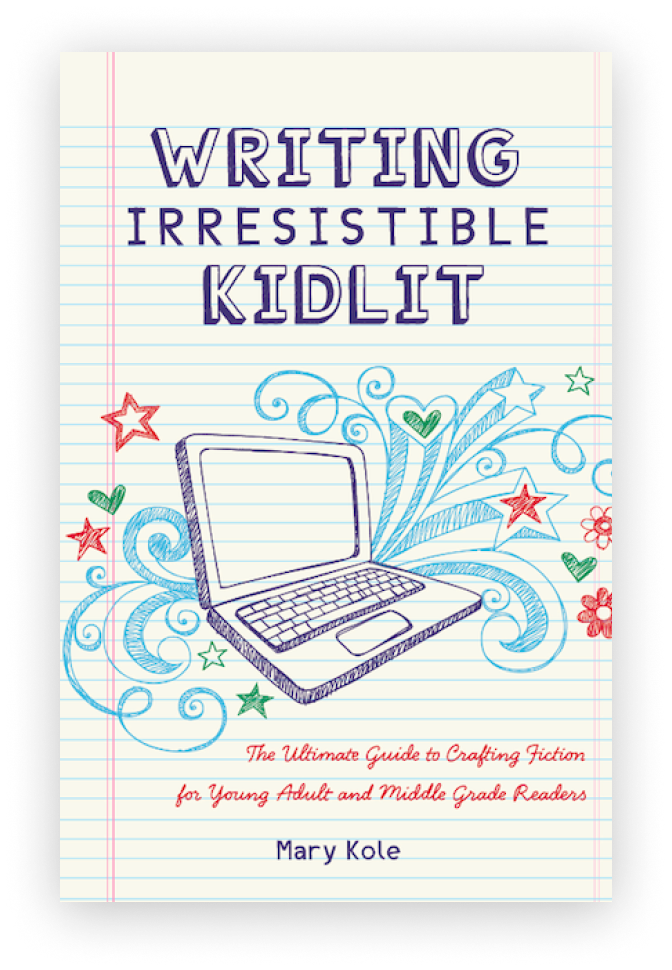How to Pursue Traditional Publication
By Mary Kole
Mary Kole is a former literary agent, freelance editor, writing teacher, author of Writing Irresistible Kidlit, and IP developer for major publishers, with over a decade in the publishing industry.
We all know that the ultimate dream is to land a traditional publication book deal. Being accepted by a traditional publishing gatekeeper means that golden stamp of approval that gives you credibility and, potentially, the green light to a thriving writing career. Traditional publication has been around for centuries, and it still remains the most sought-after way to publish, even with the rise of self-publishing and other alternative methods. But there’s so much to know about traditional publication, its benefits, its limits and most importantly, how to sell your book. Let’s dive into the steps to getting published traditionally.
How to Pursue Traditional Publication
The first step to traditional publication is to write an excellent manuscript. This is the foundation of everything, especially with how extremely competitive the book market is. Most publishing houses receive thousands of manuscripts every year (for those that accept submissions without a literary agent), and there is a very high bar to get through to the next phase of the selection process. To have a fighting chance, writers need to level up their craft by learning their genre, analyzing their target audience, reading like a writer inside and outside of their category, and incorporating writing critiques from critique groups, friends, or professional editors. It’s imperative to have a solid manuscript that can compete with the best in your genre.
Secondly, research the market for your genre and find publishers that align with your style, manuscript, and expectations. This step is vital because it saves you time and disappointment from sending your manuscript to publishers that do not cater to your genre or style, or even those that don’t accept unagented submissions. Most traditional publishers require authors to go through literary agents. Having a literary agent increases your chances of getting published traditionally and gives you an extra level of expertise in handling the contract terms of any book deal.
Once you have identified the publishers that cater to your genre and style, the next step in traditional publication is to prepare a query letter, a synopsis, and the opening chapters of your manuscript. These documents should be top-quality, polished, and professional. They have to showcase your writing voice and the essence of your story. The query letter is a one-page document that highlights your book’s selling points and why the publisher or literary agent should take a chance on your book. The synopsis should encapsulate the key character arcs and the plot points of the story, including the twists and story climax.
Traditional Publication Benefits and Alternatives
The benefits of traditional publication are significant. First, traditional publishers take care of distribution, book marketing, production, and editing and illustration costs. Publishers provide their authors with a marketing and publicity team that will handle the press kits, book tours, review copies, and any other marketing efforts for book promotion. They also have connections with literary reviewers which will give your book a higher chance of getting noticed and written about in prestigious outlets. Additionally, traditional publishers give you a wider reach with your book, as they can place them in traditional bookstores and libraries that can affect discoverability.
However, it’s important to note that traditional publication also has limits, and some of the above benefits are not extended equally across all authors. Publishers have limited slots for writers and won’t accept all manuscripts that come their way. This is why it’s essential to have a top-tier manuscript and to research thoroughly before sending your manuscript to a publisher. Traditional publishers have rigorous expectations in terms of sales numbers, which means longevity with one house or editor is not guaranteed. For example, getting a traditional publishing deal doesn’t mean you’ll get a contract with the same publisher for your next novel, especially if the first one didn’t sell well. Self-publishing is always an option, especially if you crave full control over your project. This is becoming a much more viable alternative to traditional publication.
Attaining traditional publishing is a career-changer, but it’s a process that requires hard work, research, and dedication. Writers hoping to participate should level up their craft, pay attention to the traditional publication market, and keep adding layers to their story ideas. It’s essential to note that traditional publishing is not the only avenue to publication. Whichever path you choose, remember to stay true to your writing voice, your storytelling style and, most importantly, your passion for telling stories.

Click here to purchase Writing Irresistible Kidlit, my book on fiction craft for MG and YA novels, out from Writer's Digest Books. This will show you my writing craft philosophy and give you lots of valuable advice, including tips for the novel revision process and self-editing. There are over 35 example novels cited and discussed throughout. It’s a valuable resource for any writer’s toolkit.
Click here to purchase Irresistible Query Letters, my book on query letters, including over forty examples with comprehensive notes on each one. There’s a ton of submission advice, best practices, and insider information in these pages, and you’ll really enjoy seeing what other writers are doing in the slush.
Click here to purchase Writing Interiority: Crafting Irresistible Characters, my book on interiority and character creation. Explore your protagonist’s thoughts, feelings, reactions and interpretations, expectations, and inner struggles to create a rich, immersive experience. This guide will empower you to create characters who live and breathe on the page, fostering an unbreakable bond with your audience.





